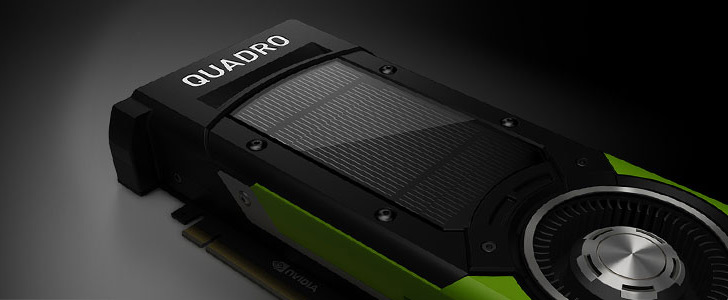Update 07/12/16: This story has now been shown to be false, after Nvidia updated its information. For a full retraction and explanation, have a read of the new story here.
Original Story: If we thought early consumer grade virtual reality was pretty, wait until the military grade experiences and AAA games start filtering through to the public. We may need some relatively hefty equipment to run them, but that's no problem for a system fitted with Nvidia's top-end enterprise card, the Quadro P6000. It's capable of running up to four VR simulations on a Rift or Vive simultaneously.
Although virtual reality might have been teased in the consumer space for a few decades and has finally made its mark in 2016, various militaries around the world have been using it just as long to help train soldiers. From tank driving, to piloting F-18s, soldiers have been in VR longer than any of us ever have. When it comes to the latest developments too, they're way ahead of the curve on visual immersion too.
Many of the demos used by the U.S. military are built by Mass Virtual, a specialist in VR simulations. It helped pioneer the 360 degree projector systems which we've seen used before VR became a big deal. Now though it creates stunning looking VR environments in its own engine, Virtual Attain, which it recently made freely available to the U.S. government.
With that it's able to create stunningly realistic environments and scenarios that allow for virtual training missions for engineering, clearing buildings, piloting ships, planes and more. Powering such experiences isn't easy though, which is why Nvidia has been throwing Quadros at it to showcase how stupendously powerful they are. At the upcoming I/ITSEC show, running between the 28th of November and 2nd December, a single Quadro P6000 will be used to power as many as four different VR experiences on four separate HTC Vives and Oculus Rifts, as per the Nvidia blog. [yframe url='http://www.youtube.com/watch?v=fXOSWuLnPSM']
The idea is that Quadro equipped systems can be installed either at the network level, for mass VR deployment, or in confined spaces such as ships of submarines, to help train large scale movements, or to refine important skills to prevent them from getting rusty during down time.
Discuss on our Facebook page, HERE.
KitGuru Says: Even if the Quadros are usually ungodly expensive, it won't be long until that sort of power becomes available for consumer grade GPUs. When it does, the idea of whether our cards can run VR is laughable. Even low end should be able to handle it by that point.
 KitGuru KitGuru.net – Tech News | Hardware News | Hardware Reviews | IOS | Mobile | Gaming | Graphics Cards
KitGuru KitGuru.net – Tech News | Hardware News | Hardware Reviews | IOS | Mobile | Gaming | Graphics Cards




It’s been one year since I finally abandoned my old job and it was a best decision i made in my life… I started freelancing from comfort of my home, over a site I stumbled upon on-line, few hrs every day, and my income now is much bigger then it was on my office work… Pay-check i got for last month was for 9000 dollars… The best thing about this work is that i have more time with my family… CHILP.IT/728813e
Google is paying 97$ per hour! Work for few hours and have longer with friends & family! !mj95d:
On tuesday I got a great new Land Rover Range Rover from having earned $8752 this last four weeks.. Its the most-financialy rewarding I’ve had.. It sounds unbelievable but you wont forgive yourself if you don’t check it
!mj95d:
➽➽
➽➽;➽➽ http://GoogleFinancialJobsCash95DirectSourceGetPay$97Hour… ★★✫★★✫★★✫★★✫★★✫★★✫★★✫★★✫★★✫★★✫★★✫★★✫★★✫★★✫★★✫★★✫★★✫★★::::::!mj95d:….,……